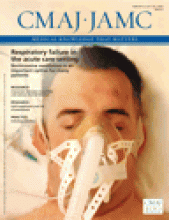Highly processed, nutritionally deprived and calorie-rich foods tend to be the profit drivers most heavily marketed by their manufacturers. Their promotion and consumption contradict government guidance on healthy food choices and the aims of health organizations fighting an epidemic of childhood and adult obesity. Why then do many health organizations allow their messages and reputations to be tarnished by partnerships with food companies (see Appendix 1, available at www.cmaj.ca/cgi/content/full/cmaj.110085/DCI)?
The world has changed since the first Ronald McDonald House partnered with The Children’s Hospital of Philadelphia in 1974. We have become acutely aware of the adverse health consequences of processed foods. Obesity rates are skyrocketing, adult-onset diabetes is no longer limited to adults, and scholarly articles debate how many deaths and how many billions of dollars are lost annually to obesity. Some public health officials have even predicted that our children’s life expectancies will be shorter than our own.1
For the food industry, partnerships with health charities and health sector organizations are alluring. Doing so buys corporations credibility, ties brands to the positive emotions attributed to their partnered organization and helps buy consumer loyalty — all good for shareholders.
Aside from the overall public appeal of co-branding, the food industry has managed to translate partnerships with health organizations into sales. For instance, Yum! Brands, a large restaurant conglomerate, linked up with Susan G. Komen for the Cure, a leading US breast cancer charity, to sell pink buckets of fried chicken.2 UNICEF Canada, which promotes and supports nutritional programs in developing countries, lent its name to sell Cadbury chocolate bars.3 Although clearly beneficial to sales, co-branding with chocolate bars or Kentucky Fried Chicken in no way supports healthy eating or health promotion activities.
Partnerships also help with corporate lobby efforts. For instance, Coca-Cola CEO Sandy Douglas leveraged the company’s relationship with the American Academy of Family Physicians to help make the case that soda taxes were unnecessary.4 Save the Children, an organization aiming to positively change the lives of children, was initially a staunch supporter of soda taxes. Recently, the organization withdrew its support, saying that support of the soda taxes did not fit the way Save the Children works. Perhaps it is only a coincidence that it is seeking a grant from Coca-Cola and has accepted a $5 million grant from PepsiCo.5 Both Coca-Cola and PepsiCo state that they did not ask the charity to alter its position.5
Partnerships offer the food industry another important benefit — obfuscation. Canadian and American research efforts have identified excessive energy or caloric intake as the primary driver of rising obesity rates.6,7 For instance, double-labelled water studies, a reference standard measure of total energy expenditure over long periods, have inferred that overall activity levels have not changed drastically since the 1980s.8 Although increasing overall activity levels would improve health, obesity rates will not decrease without decreased caloric intake.
Through these partnerships, the food industry seeks to emphasize that inactivity — not the promotion and consumption of its calorie-rich products — is the prime cause of obesity. According to ParticipACTION, in a Coca-Cola co-branded press release highlighting “the inactivity crisis,” “Experts have stated that for the first time in history, inactivity may cause this generation of youth to die younger than their parents.”1 It cites a 2005 New England Journal of Medicine article titled “A potential decline in life expectancy in the United States in the 21st century.”9 However, that article mentions inactivity only in passing. A Hershey’s partnership with the American Dietetic Association offers an online survey of registered dietitians that promotes the daily inclusion of chocolate as part of a “balanced lifestyle.”10 In another example, Dr. Dean Ornish, president of the Preventive Medicine Research Institute, headlines a Mars Inc. web page stating, “it’s important to find a balance between what we eat and how much we exercise, and it’s important to balance enjoying snack foods along with eating a variety of other types of foods.”11
Corporations are not the problem. By definition, corporate spending must serve to increase shareholder value — a transparent fiduciary requirement that should encompass philanthropic efforts. Health organizations, even when desperate for money or resources, should avoid co-branding with the food industry. At the very least, partnerships should comprise unconditional arm’s-length grants with clauses limiting how corporations use health organization brands. Otherwise, health promotion goals will be compromised by helping to promote unhealthy brands.
Obesity is a pressing public health concern worldwide. The epidemic is primarily fuelled by the consumption of excess calories, including healthy ones — a message that will not resonate with corporate sponsors. When they partner, health organizations become inadvertent pitch-men for the food industry. They would do well to remember that corporate dollars always introduce perceived or real biases that may taint or distort evidence-based lifestyle recommendations and health messages.
Footnotes
-
Competing interests: None declared for Yoni Freedhoff. See www.cmaj.ca/misc/cmaj_staff.dtl for editorial advisory team statements.
-
With editorial advisory team: Ken Flegel MDCM MSc, Noni MacDonald MD MSc, Matthew B. Stanbrook MD PhD











